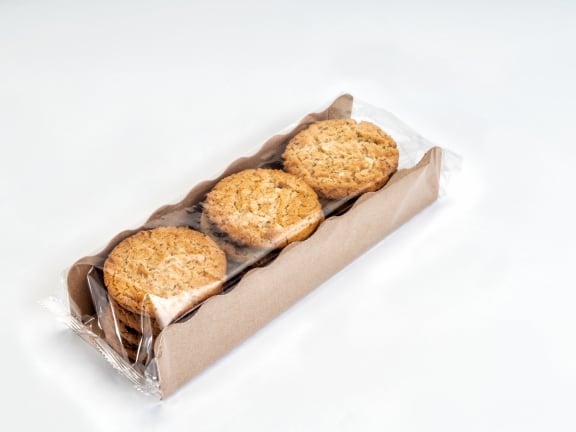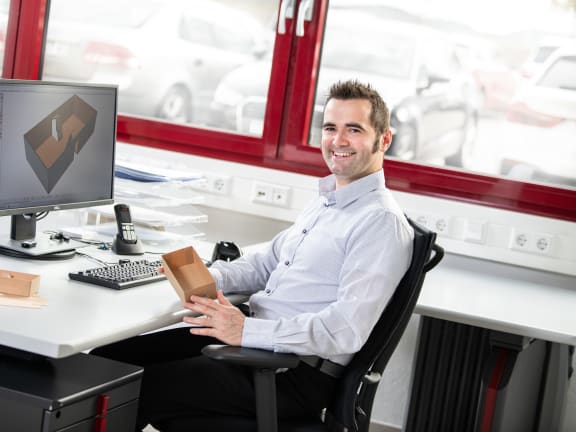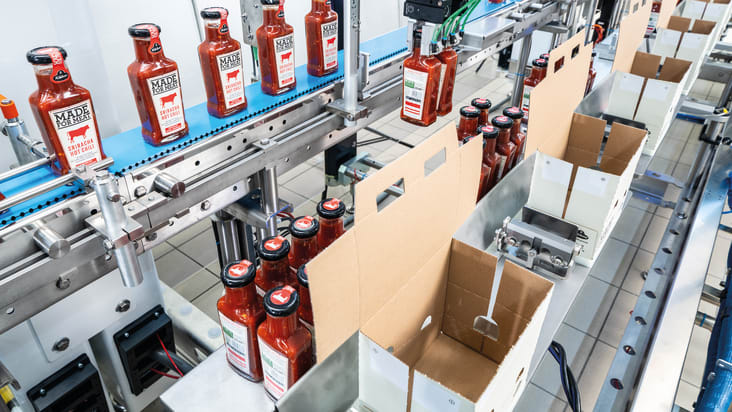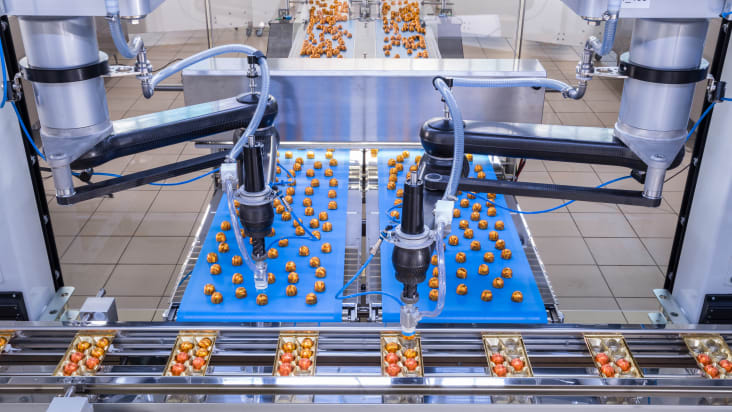Packaging development for customers and machines
In general, Schubert’s customer advisors choose from a pool of some ten basic designs with proven packaging types and draw on their experience to obtain an initial idea of the packaging. The design is then carried out in a CAD system, the results of which are agreed upon with the customer as one or more samples.
For packaging machines such as those from Schubert, both the blank and the size of the packaging are important. Because, although most cartons are rectangular-shaped, with specific dimensions in length, width and height, the blanks can vary greatly. This has an impact on the functioning of the carton erector in the packaging machine, as well as on the magazine plates from which the robot takes the flat blanks. The magazine in the carton erector is what determines the performance of the entire line. The more blanks fit next to each other in a magazine so that the robot can access them at the same time, the more output can be achieved in the system.
For machine-compatible packaging, the design of the carton is therefore key during packaging development. But of course, the other requirements for transport and sales must also be met. This is why Schubert’s experts work closely with the customer’s packaging supplier when developing a new type of packaging and are constantly involved in discussions. For example, customer requests for material-saving or more cost-effective solutions, for other packaging formats, more marketing space on the packaging for the point of sale, or for more efficient transport solutions with a larger number of products per secondary packaging can also be implemented. The development of a new type of packaging therefore holds a great deal of potential for customers which can be exploited, and not only in terms of sustainability and future-proof packaging.








